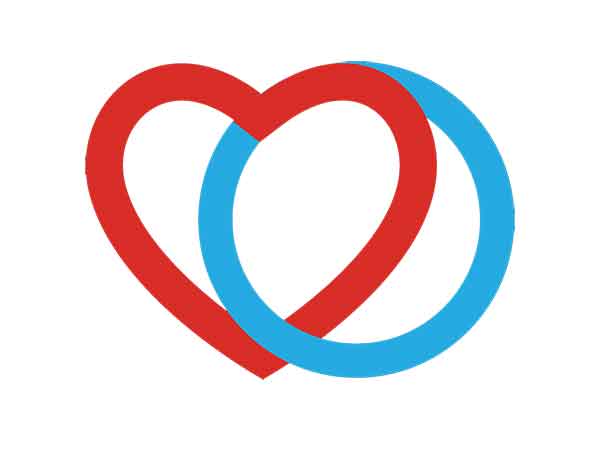Sotagliflozin Shows Benefit for Difficult-to-Treat Form of Heart Failure
Drug reduced cardiovascular adverse events in patients with diabetes and heart failure
Patients with both diabetes and heart failure who were treated with sotagliflozin, a novel investigational drug for diabetes, for a median of nine to 16 months experienced reductions of 22% to 43% in the risk of death or worsening heart failure compared with similar patients who were treated with a placebo. The drug was effective in patients with all forms of heart failure, including those whose heart muscle is abnormally stiff (preserved ejection fraction) and for whom there is currently no effective treatment, according to research presented at the American College of Cardiology’s 70th Annual Scientific Session.
“Treatment with sotagliflozin robustly and significantly reduced cardiovascular adverse events across the full spectrum of patients with heart failure, including patients who have heart failure with preserved ejection fraction (HFpEF), for which no effective treatment is currently available,” said Deepak L. Bhatt, MD, MPH, executive director of interventional cardiovascular programs at Brigham and Women’s Hospital Heart & Vascular Center, professor of medicine at Harvard Medical School, and principal investigator for the study. “The benefit for patients with HFpEF is striking—this is the first trial to find a significant benefit in this population. We believe that these results merit a recommendation that patients who have both diabetes and HFpEF should be treated with sotagliflozin or another medication in its class.”
Ejection fraction is a measure of how much blood the heart pumps out each time it contracts. With a normal ejection fraction, 50% to 70% of the blood in the heart is pumped out with each heartbeat. In heart failure with reduced ejection fraction—a better known, more treatable form of the disease—weakness of the heart muscle means that only 40% or less of the blood in the heart is pumped out with each heartbeat.
By contrast, an HFpEF patient’s ejection fraction is normal or near normal, but the heart must work harder to adequately fill with blood given abnormal stiffness of the heart muscle. HFpEF occurs in both men and women but is a particularly common problem among older women, Bhatt said.
Sotagliflozin belongs to a class of drugs known as SGLT1/2 inhibitors and is the first drug in this class shown to help control blood sugar levels in two ways: by modulating the rise in blood sugar levels after meals and by helping the body to eliminate more sugar in urine. Recent studies have shown that sotagliflozin also reduces heart attacks and strokes.
For this analysis, Bhatt and his colleagues combined, or “pooled,” patient data from two large, randomized trials, known as SCORED and SOLOIST-WHF, which were each previously published in the New England Journal of Medicine.
The SCORED trial evaluated whether sotagliflozin prevented cardiovascular events, including deaths due to a heart attack or stroke and hospitalizations or urgent visits for heart failure, in patients who had both diabetes and chronic kidney disease. A total of 10,584 patients were randomly assigned to treatment with either sotagliflozin or a placebo. After a median follow-up period of 16 months, treatment with sotagliflozin reduced cardiovascular events by 26% compared with placebo.
The SOLOIST-WHF trial evaluated whether sotagliflozin prevented cardiovascular deaths and hospitalizations or urgent visits for heart failure in patients who had diabetes and worsening heart failure. In this trial, 1,222 patients were randomly assigned to treatment with either sotagliflozin or a placebo. After a median of nine months of follow-up, treatment with sotagliflozin reduced cardiovascular deaths and hospitalizations or urgent visits for heart failure by 33% compared with placebo.
For the current pooled analysis, the researchers examined the effectiveness of sotagliflozin treatment according to differences in patients’ ejection fraction at study entry, which was available for all but 22 patients in the original trials. They performed analyses for both the entire pooled cohort of 11,784 patients and for a subgroup of 4,500 patients who had a history of heart failure (HF group). Among both groups, they found significant reductions in the risk of death due to cardiovascular causes and hospitalization or an urgent visit for heart failure, irrespective of ejection fraction at study entry. Among patients with an ejection fraction of 40% or less, sotagliflozin treatment reduced risk by 22% in both the entire cohort and in the HF group. For patients with an ejection fraction of 40% to 50%, sotagliflozin reduced risk in the entire cohort by 39% and in the HF group by 43%. For patients with HFpEF, the medication reduced risk by 30% in the entire cohort and by 33% in the HF group. All results were statistically significant and were similar for men and women, Bhatt said.
“We saw a significant reduction in the primary endpoint irrespective of patients’ ejection fraction at study entry,” Bhatt said. “The magnitude of the benefit in patients with HFpEF was surprising. Sotagliflozin offers a meaningful, incremental advance in improving outcomes for this challenging group of patients.”
A limitation of the study is that the results apply only to patients with heart failure who also have diabetes, Bhatt said. The researchers had intended to also analyze the effect of sotagliflozin in patients with heart failure who did not have diabetes; however, this analysis was not performed because both the SCORED and SOLOIST-WHF trials were terminated early due to loss of funding at the onset of the COVID-19 pandemic.
Source: American College of Cardiology
Full bibliographic information
“Benefits Of Sodium Glucose Co-transporter-1/2 Inhibition With Sotagliflozin Across The Full Spectrum Of Ejection Fraction, Including Heart Failure With Preserved Ejection Fraction,” Deepak L. Bhatt, Michael Szarek, Ph. Gabriel Steg, et al., American College of Cardiology 70th Annual Scientific Session, May 17, 2021





